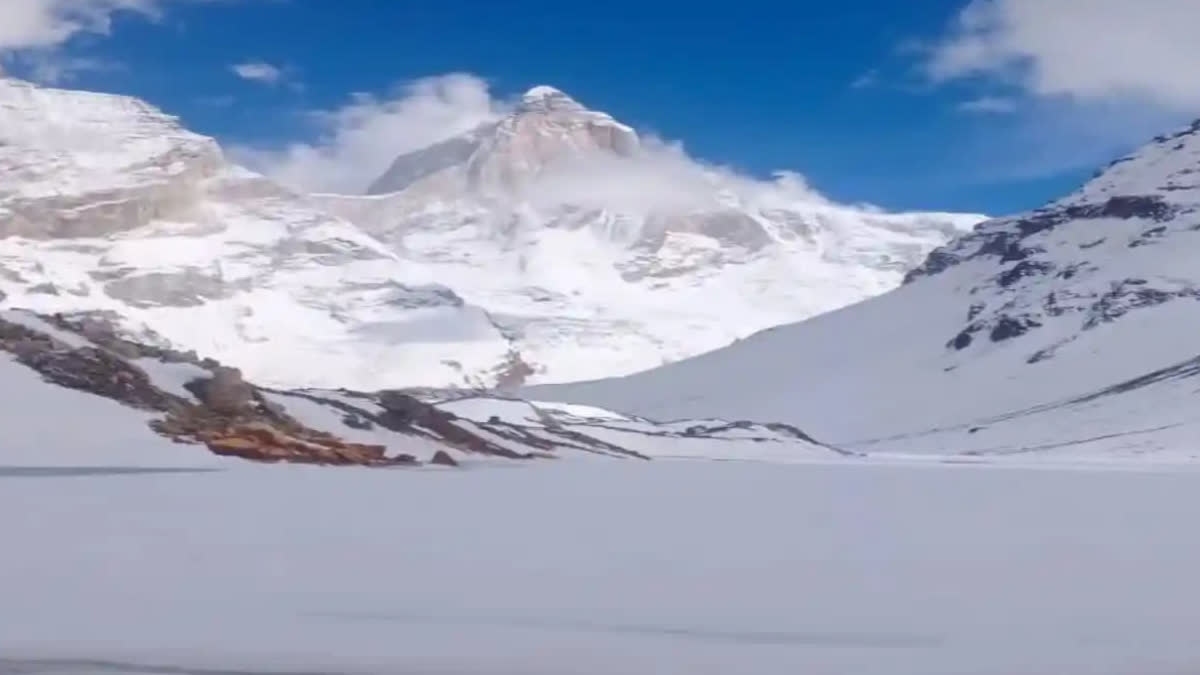In the last decade, the Himalayan region in India has accounted for 44 per cent of all the disasters reported in the country, mostly in Uttarakhand. More than 192 incidents of floods, landslides and thunderstorms have been reported in 10 years with cloudbursts and torrential rains experienced in the region in 2023 as curtain-raisers for the future.
Not more than a month ago, heavy rain lashed Uttarakhand, disrupting normal life. Experts believe that this will become more pronounced with every passing year.
This assessment of the Himalayan region and the impacts of climate change are published in the State of India’s Environment 2024 report, released by the Centre for Science and Environment (CSE) and Down To Earth magazine.
As per the report, the Hindu Kush Himalayas have seen a 65 per cent faster loss of glacier mass. The ice melt from glaciers is creating new glacial lakes. The cloudbursts are triggering overflows in the lakes and floods in the area. Overall, the Himalayas have already lost more than 40 per cent of their ice, and are likely to lose up to 75 per cent in the next 75 years. The vegetation line in the Himalayas is also shifting upwards at the rate of 11 to 54 m per decade.
Over the last few years, scientists have been warning about the impact of global warming on the Himalayas and the entire ecosystem. While the authorities design appropriate actions to stabilise the vegetation, increasing danger to human life due to the changes in the Himalayan region has no alternative.
Decline of snow-covered areas in the Himalayas
The Himalayas are a major source of water supply not only for India but several other countries. It is reported that about 2,000 cubic kilometres of water are stored in the Himalayas - often called the water tower of Asia. However, the water in the Himalayas has started decreasing with glaciers shrinking rapidly.
Decreasing seasonal snowfall
Former scientist of Wadia Institute of Himalayan Geology (WIHG), Dr DP Dobhal said that global warming has caused a decrease in snow in the upper region of the Himalayas, which after melting leads to glacier melting. This is deteriorating the health of the glaciers in the Himalayas at a rapid speed.
Snow melts earlier than before
Scientists say that the range of snowfall has moved 50 meters upwards. This is a direct effect of the glacier on the Himalayas. Scientists observe that the snow used to start melting in the higher Himalayan region from the end of June, however, the time has shifted to April making it an early melting of snow as well as glaciers. This is creating other climate changes in the region including floods and cloudbursts.
Worrying events in the Himalayas
In the last five years, the natural calamities caused by climate change have increased rapidly. These incidents are a concern for scientists along with preparing plans to avoid its worst consequences. Several incidents have been reported of avalanches in the higher Himalayan regions, majorly in Kedarnath with 5 incidents since 2022. Similarly, the rapid erosion of moraine (existing sand on glaciers) causes an exceeding number of landslides.
Forest fires causing black carbon on glaciers
The threat of black carbon on Himalayan glaciers is increasing rapidly. The soaring temperature in the Himalayan region has caused multiple incidents causing carbon emissions that eventually reach the glaciers. Scientists say, the black carbon absorbs heat and then the temperature of that area increases. Fire in the forests of Uttarakhand and other Himalayan regions is reducing the green space and also affecting the upper Himalayan region.
Gangotri and Malari glaciers lose lifespan
According to Himalayan researcher Dr Vipin Kumar, areas like Gangotri and Malari, which were laden with glaciers, are severely affected by tourists. The prime reason for glacier decline in these areas is road construction leading to carbon emission, therefore, building heat in the environment around.
Talking about the adverse effects of climate change in Uttarakhand and other Himalayan regions, environmentalist Dr Anil Joshi, in conversation with ETV Bharat said, there’s a dire need to conserve natural resources like rivers and jungles. “Drylands should be converted into forests and there should be adequate water storage tanks. These steps will lead to growing vegetation and control flood-like situations,” he said.
He further said that until the state is completely covered with trees, the target to control climate change is not possible. Dr Joshi pointed out that the increased heat in India and other countries is a result of global warming. “We can’t stop global warming nor can we control its effect on glaciers, but what we can do is control the temperature of our surrounding areas. There should be no tempering with upper Himalayan areas and tourism should be completely banned,” he opines. The environmentalist, who is also a recipient of Padma Bhushan, the third-highest civilian award in India, said that the government needs to include ecology in all the plans and policies of the country. Additionally, the Himalayas are not a place for tourism, rather every individual should think about conserving nature and its resources.
Read More



